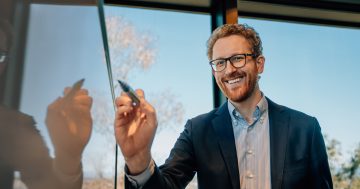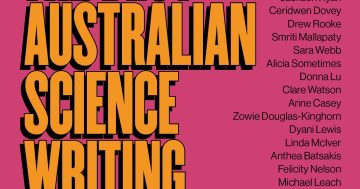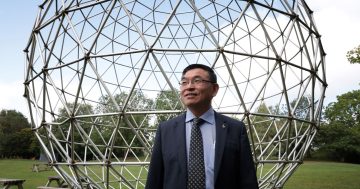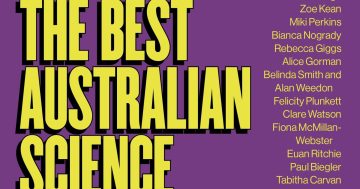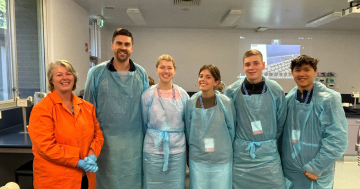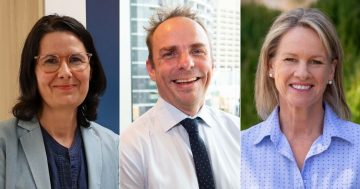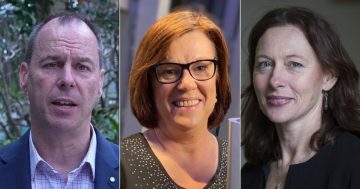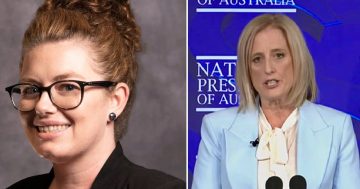Jessie Tu* says three women have been awarded the Prime Minister’s Prize for their work in science.
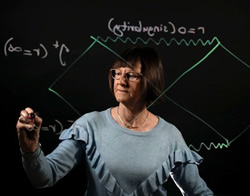 Australia’s top science prize has gone to a female physicist for the first time, alongside three other colleagues for their work discovering gravitational waves through the development of advanced lasers that were previously thought unimaginable.
Australia’s top science prize has gone to a female physicist for the first time, alongside three other colleagues for their work discovering gravitational waves through the development of advanced lasers that were previously thought unimaginable.
Susan Scott (pictured) was awarded the Prime Minister’s Prize for Science, alongside David Blair, Peter Veitch and David McClelland.
She has spent more than three decades studying general relativity, gravitational singularities and black holes, and is now head investigator at the ARC Centre of Excellence for Gravitational Wave Discovery (OzGrav) in Naarm.
In 2015, Professor Scott was part of a 1000-strong international team that detected gravitational waves which first proposed by Albert Einstein, more than 100 years ago.
The Advanced LIGO Project is a large-scale physics experiment which began in the US in the early 1990s that sought to detect cosmic gravitational waves and develop gravitational-wave observations as an astronomical tool. Funded by the National Science Foundation, Australia became part of a cohort of four countries that were involved, with scientists from The Australian National University and the University of Adelaide partaking.
Scott spoke to the ABC this morning, explaining the rare phenomenon.
“That detection involved two black holes colliding and the two amazing projections from Einstein’s theory are black holes and gravitational waves and they came together in that one event,” she said. “It’s like the most magical story in science.”
Scott splits the Prime Minister’s Prize for Science, worth $250,000, with David Blair from the University of Western Australia, Peter Veitch from the University of Adelaide and David McClelland from the Australian National University.
“Australia has a presence in this field now because of the work we have done over more than 30 years,” Scott said.
At ANU, Scott leads a team of scientists who analyse data from signals gathered by gravitational wave detectors.
She was also among a few Australians who used the detection of gravitational waves by optical telescopes to detect kilonova explosions, which are huge explosions that occur when two neutron stars slam into each other.
Scott is the first female physicist to ever win the award, which is in its 21st year.
In Australia, only 21 per cent of physics professors in universities are women.
According to an American Institute of Physics report released in 2017, women are underrepresented in all aspects of physics education and work, including school, university, and research laboratories.
They also tend to hold lower seniority and earn less compared to their male counterparts.
Speaking to the ABC, the Monash University alumni said she hopes her win will encourage young women to pursue physicist and science.
“It could have easily been the case that the four recipients were all males because that’s how the field was when I started out,” she said.
As a student in the 1980’s, Scott studied under Professor Sir Roger Penrose, who’d won a Nobel Prize for proving black holes were possible using Einstein’s general relativity theory.
As a Rhodes Visiting Fellow, Scott studied at Oxford for a number of years before returning to a job at the Australian National University in 1998, where she began concentrating on gravitational waves.
“When I got to Canberra I got to thinking ‘Yeah, there’s something in these gravitational waves’,” she said.
“I don’t think I would have embarked on it if I hadn’t convinced myself that the waves really were an implication of the theory.”
An additional six prizes were awarded to scientists in the Prime Minister’s Prize for Science categories, including a Prize for Innovation, Life Scientist of the Year, New Innovators and Excellence in Science Teaching in Primary Schools.
Associate Professor Xiaojing Hao was awarded the Malcolm McIntosh Prize for Physical Scientist of the Year (worth $50,000) for her research into a new material, called sulphide kesterite, which has potential in the production of environmentally friendly thin-film solar panels.
Hao is one of Australia’s leading solar researchers and currently lectures at the University of New South Wales’ as a scientia associate professor.
She completed her PhD ten years ago and has since focused her research on developing sustainable solar panel technologies that use natural materials.
Hao spoke to RenewEconomy this week, explaining the exciting prospect for the technology she has built.
“We have seen the deployment of solar cells for the use in solar farms and in rooftop solar, but we think we can do a lot more by integrating solar cells into the surfaces of materials, including in the surfaces of buildings, or even electric vehicles,” she said.
“Doing this allows us to maximise the use of solar cells in all aspects of our lives and in doing so we can reduce greenhouse gas emissions.”
Hao said her scientistic ambitions were born when she was still a little girl.
“I am motivated by the desire to create and live in a more efficient and convenient world,” she said.
“From a very young age, I always felt there was a smarter and easier way to do things. I wanted to be an innovator and a detective – so I became a scientist.”
Sarah Fletcher, a Year 6 teacher from Bonython Primary School in Canberra, was awarded the Prime Minister’s Prize for Excellence in Science Teaching in Primary Schools (worth $50,000).
The specialist science teacher, who is also a graduate of ANU, was awarded for her contribution to the STEM program at her school and other education programs she conducts in the ACT.
Fletcher told Sarah Lansdown of the Canberra Times that “nothing beats the look on a child’s face when a new scientific concept clicks into place.”
“In the science we do in primary school, they’re still inquiring, they’re so excited but then somehow it sort of gets a bit muddled in high school and they stopped seeing it as a career,” she said.
“It’s just something you do at school.”
“Having these normal people who are scientists come in and talk to them just gets that idea in their heads that they can do it.”
*Jessie Tu is a journalist with Women’s Agenda.
This article first appeared at womensagenda.com.au


